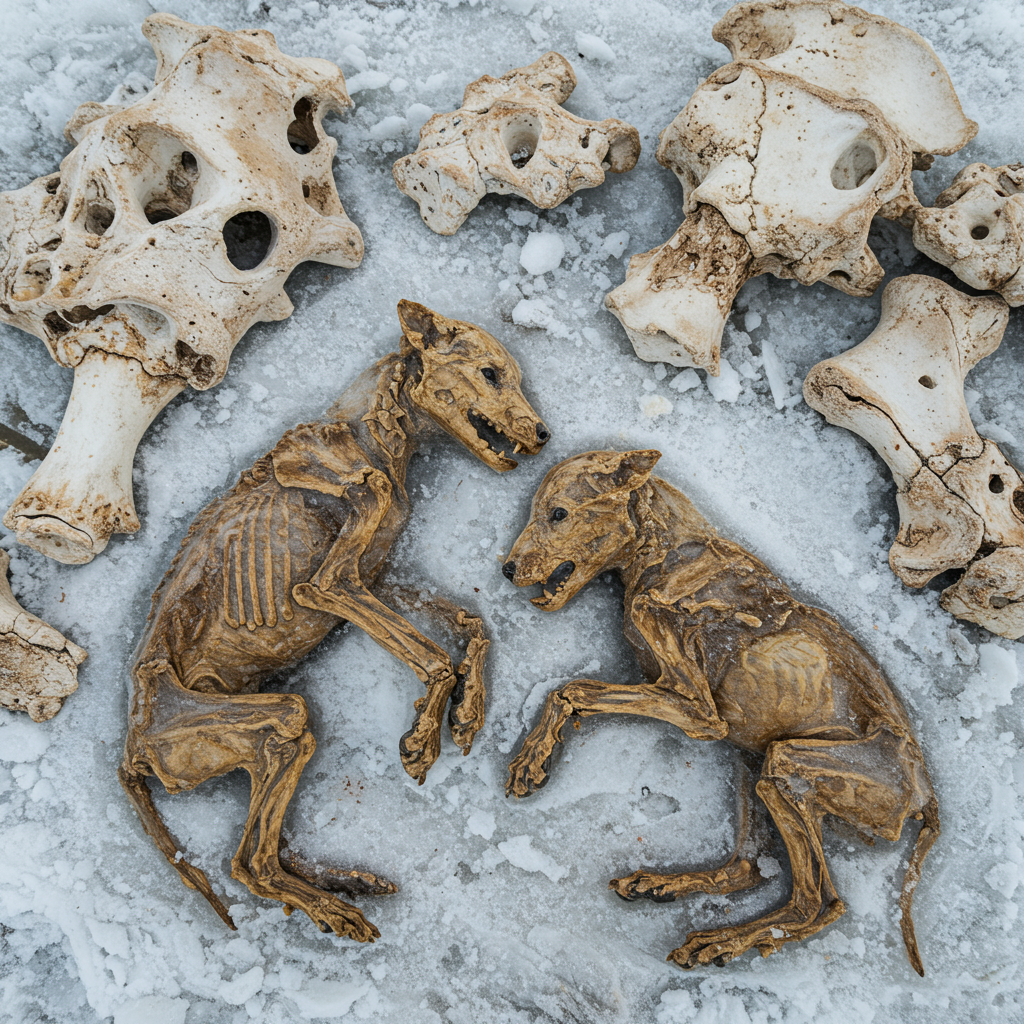Deep in the permafrost of northern Siberia lies a remarkable discovery: the “Tumat Puppies.” These two incredibly well-preserved canid remains, dating back some 14,000 to 15,000 years, offer an unprecedented window into the Late Pleistocene era. Their finding near potentially human-modified mammoth bones initially sparked an exciting hypothesis: could these be some of the earliest domesticated dogs, hinting at a crucial moment in human history?
The challenge of distinguishing early domestic dogs from their wild wolf ancestors is a significant hurdle in understanding how and when humans first befriended canids. The Tumat Puppies, due to their age and unique preservation, became key candidates for investigation.
Unraveling the Past: A Multifaceted Scientific Approach
Thanks to their natural mummification in the permafrost near the village of Tumat, scientists could employ a battery of advanced techniques not usually possible with ancient remains. A “multifaceted analysis” combined:
Genomic and Metagenomic Analysis: To study their DNA, reveal kinship, and identify consumed organisms.
Stable Isotope Analysis: To reconstruct their diet based on chemical signatures in their tissues.
Plant Macrofossil Analysis: To understand the vegetation in their environment and potential plant consumption.
Osteometry: Measurement of bones to assess physical characteristics.
Together, these methods allowed researchers to dig deep into the lives, environment, and relationships of these ancient canids.
What the Analysis Revealed
The comprehensive study yielded surprising and definitive answers about the Tumat Puppies:
Not Dogs, But Wolves: The analysis conclusively showed that the Tumat Puppies were not early domestic dogs but wolf cubs. Genetic evidence confirmed they were sisters, likely around two months old when they died. Furthermore, their lineage appears to belong to an extinct population of wolves, meaning they are not direct ancestors of modern domestic dogs. Interestingly, they possessed black fur, a trait once thought exclusive to dogs among canids, suggesting this color variation existed in ancient wolves too.
A Glimpse into Their Ice Age World: The study painted a picture of their environment as relatively mild and dry for the region, supporting diverse vegetation. Their diet was also varied. While they were still young enough to be nursing from their mother, analysis of their gut contents and tissues revealed they were also consuming solid food, including small birds (like a wagtail), prairie grasses, leaves (from shrubs like Dryas), and willow twigs.
The Surprising Twist: A Woolly Rhino Last Meal: Perhaps the most unexpected finding was the presence of woolly rhinoceros meat, specifically skin from a young calf, in their final meal. This suggests that the adult wolves in their pack were capable of hunting massive prey or effectively scavenging large carcasses and bringing sustenance back to the den for the pups. It hints at sophisticated group hunting strategies or potentially larger body sizes for these Ice Age wolves compared to their modern descendants, alongside evidence of typical wolf social behavior like den rearing.
Solving the Human Link Question: Despite being found near mammoth bones suspected of being butchered by humans, the critical dietary analysis found no evidence of mammoth consumption by the wolf pups. This lack of a dietary link directly challenges the initial hypothesis that they were early domesticates associated with human hunting or scavenging of mammoths. The study concluded that based on the evidence, there is no established link between these specific wolf pups and ancient human activity.
Why This Matters
The Tumat Puppies, though not the early dogs many hoped for, provide invaluable insights. Their study:
Refutes a specific hypothesis about early dog domestication and human association for these particular canids.
Offers unprecedented detail into the ecology, diet, environment, and behavior of Late Pleistocene wolves.
Highlights the immense scientific value of permafrost preservation for understanding ancient life.
Contributes to our broader understanding of wolf evolution and the complex story of how Canis lupus ultimately led to the domestic dog.
In conclusion, the Tumat Puppies remain a fascinating discovery, shedding light on the world of Ice Age wolves, their diverse lives, and demonstrating the power of modern science to uncover the secrets held within ancient remains.




